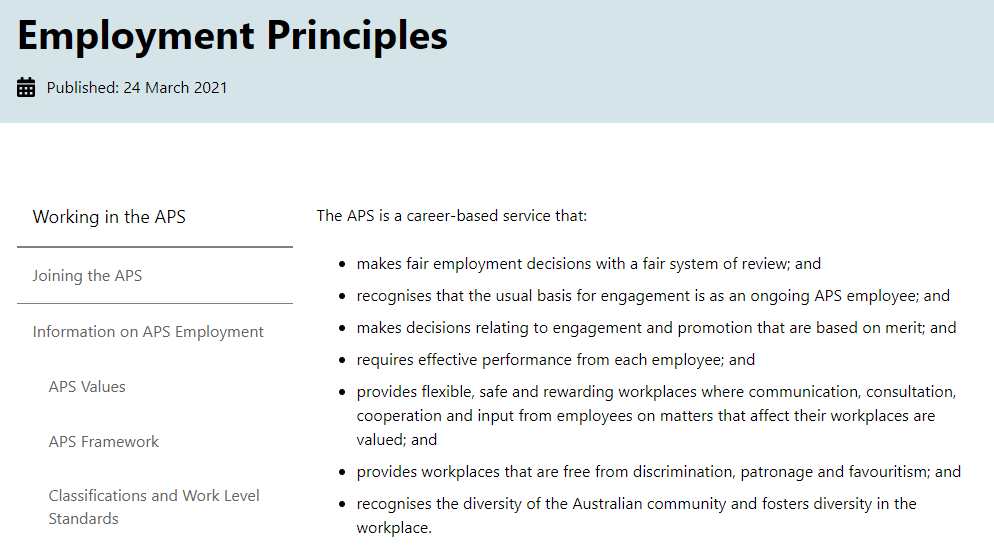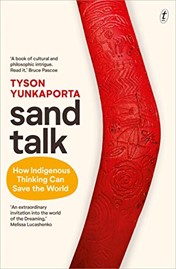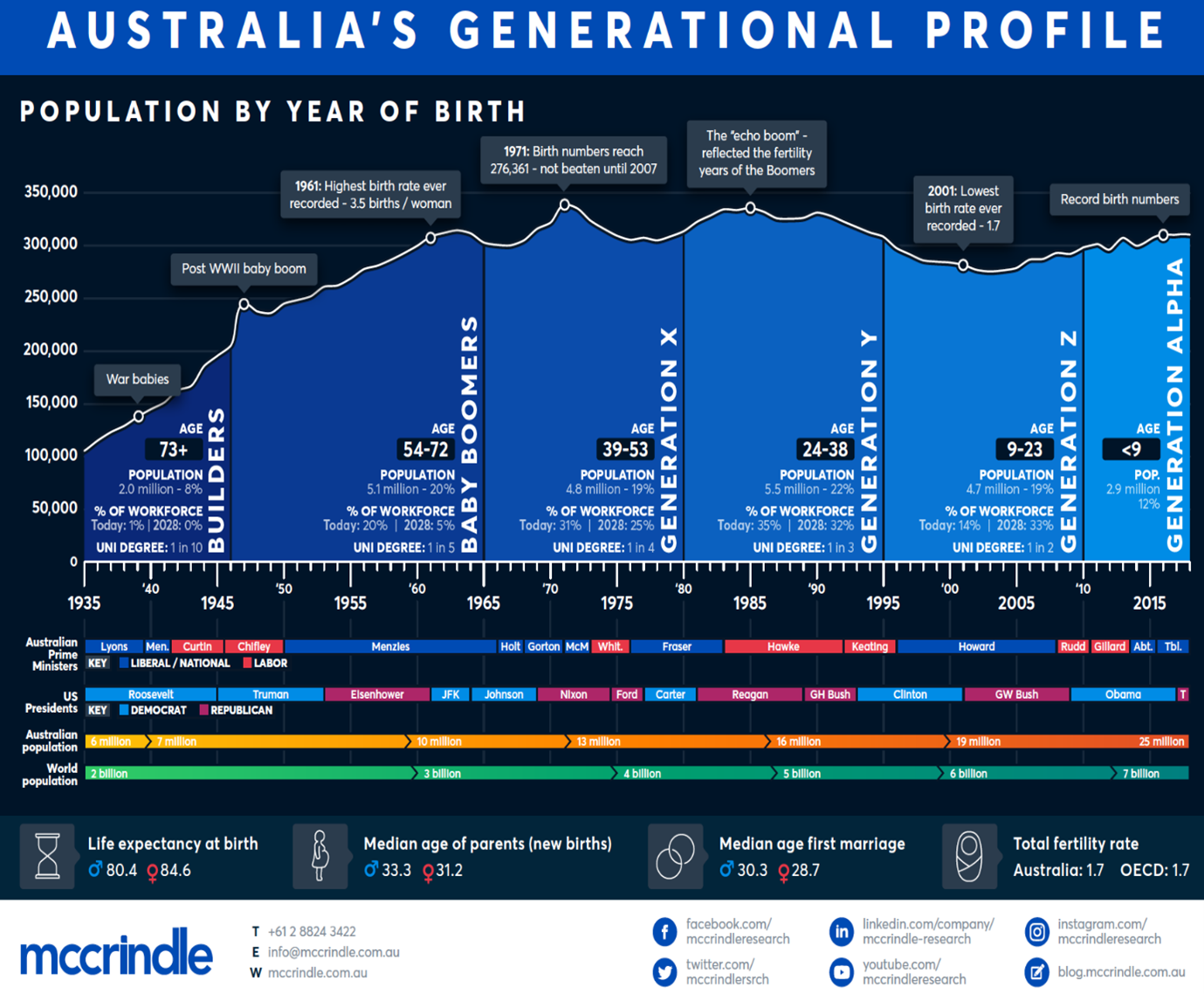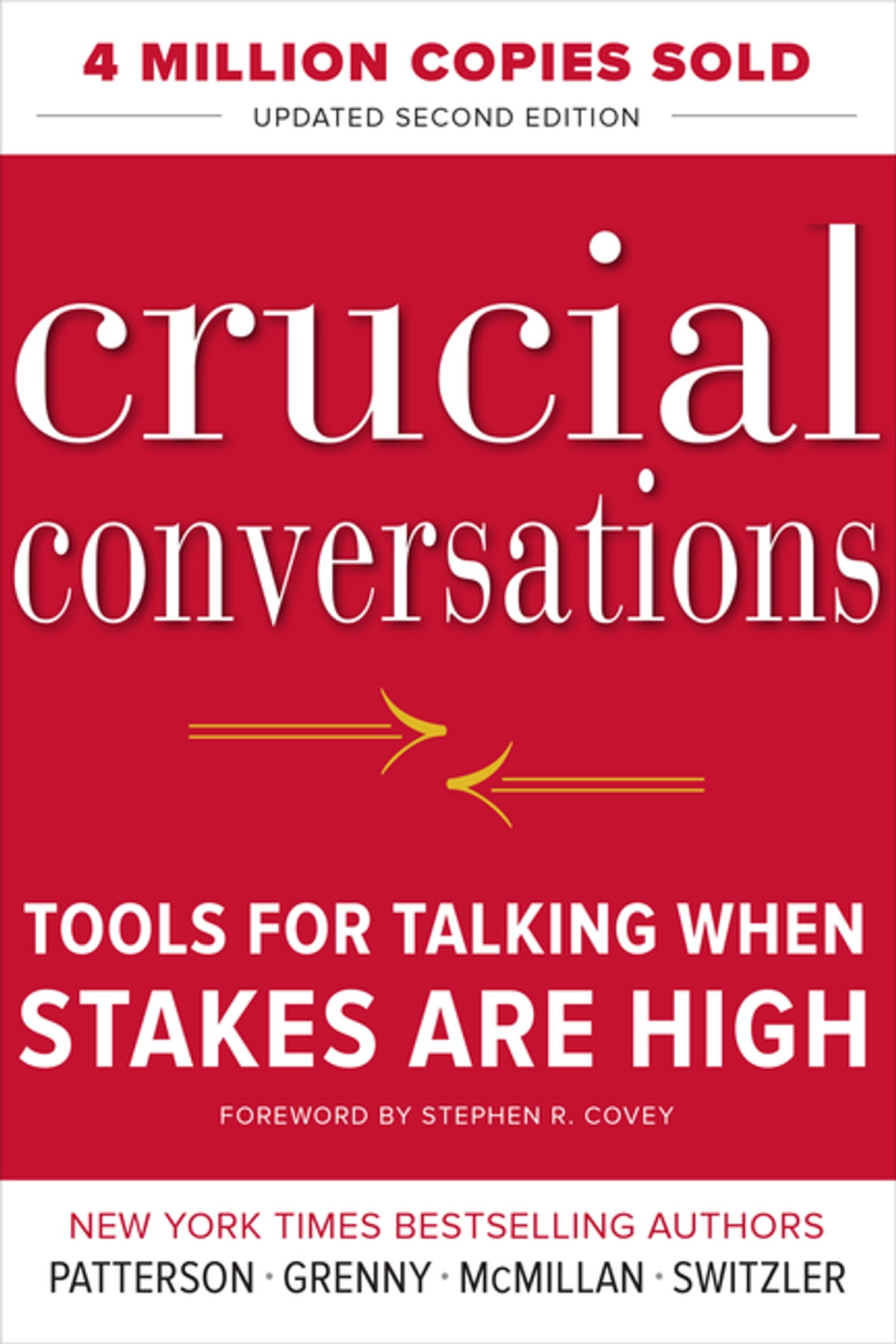Topic 2.5: Navigating diversity and culture in teams and groups
A focus on self-awareness and developing emotional intelligence is far from a selfish exercise. In fact, its purpose is very much linked to the contributions we make in the lives of others – individually and collectively. In a way, as we grow in self-awareness we become more socially aware – more sensitive to the fact that we are each a part of many larger ecosystems.
Groups are dynamic, interconnected and interacting systems – systems that connect with and interact with multiple other systems as well. Each person in a group – a social system – brings to the group their own connections to many others systems.
Most groups of individuals in our workplaces will represent a variety of ethnic, social, demographic and psychological cultures – or ‘systems’. Which is a good thing – monocultures can be very boring! Thus, diversity and inclusion becomes a key area of focus for leaders and managers wanting to leverage difference of view whilst ensuring positive relationships and communication within a team or group.
Not surprisingly, the Australian Public Service Commission highlights the importance of diversity and inclusion within the workplace and the Australian community more broadly.

In the 2020-2021 APS State of the Service report (chapter 3 “Your APS”) we read:
“A diverse and inclusive APS contributes to better outcomes in service to the Government and the Australian community …
“APS leaders recognise that harnessing diversity in its many dimensions is a key element to agency success, especially when it comes to tackling problems of increasing complexity and on a global scale. Cultural diversity in the workplace, supported by an inclusive work environment, enables innovation, strong contestability and better outcomes.
“Diversity and inclusion has often been perceived as a stand-alone effort undertaken by HR, or a ‘tick box’ exercise. However, there has been a considered effort across the APS over the last 12 months to ensure diversity and inclusion becomes embedded in everyday work, and that it is a part of workforce planning activities and good people management practices.”[1]
Required Activity
25 mins
Please take some time to familiarise yourself with some key principles and aspects of workplace diversity by exploring the APSC State of the Service 2020 – 21 Report.
Required Reading
15 mins
The APSC highlights four key diversity groups in the Australian Public Service: Indigenous Australians, people with disability, women, and people from non-English speaking backgrounds. Diversity, of course, is represented even more widely than this, including:
- the psychological type diversity we have already looked at
- religious and cultural backgrounds and practices
- sexual orientation
- age
- family responsibilities
- socioeconomic origins.
Required Reflection
20 min
Using this list and any others you can identify, make note of the many individual and collective representatives of different cultures and contexts from the people that you regularly work with.
How would you describe the diversity within your own work team?
As the sources above note, valuing and learning from the diversity of experiences and perspectives that exists within our organisations and teams offers the opportunity to improve the way we do things and respond to an increasingly diverse community.
Collectively, when people work together they create team and organisational culture.
Schein explained that organisational culture is expressed in many ways and at several levels, including:
- The visible artefacts and symbols – e.g., buildings and offices, use of space, decor, dress.
- The “espoused” values – what people in the team or organisation say about what is important
- The (often invisible) basic assumptions (values in practice) that underpin “the way things are done around here” – usually unchallenged and taken for granted.
It’s easy to see how organisational culture can easily discourage, discriminate against or simply ignore diversity – and thus miss the opportunities it provides to be more flexible and adaptable to the environments within which an organisation, department or team operates.
15 min
Honouring diversity and being more inclusive requires a conscious mix of self-awareness, respect for others, and openness to learning. Conscious attention is required because we make constant “snap judgements” about others based on impressions. And one of the most powerful judgements we make is based on similarity to ourselves. Those who are similar to us tend to make us feel safer and more comfortable; differences can feel awkward, confusing and even threatening. But of course those feelings and impressions are rarely accurate. Those who are apparently similar to us can also make us feel awkward, can confuse us and can be threatening towards us! Our lack of familiarity or comfort with difference does not make it wrong, lesser or something to be feared.
The model below highlights how far we can be from actually valuing others when our instinctive reactions take over.

Each of us can identify with how differently we contribute based on where on that scale we are being met. And each of us can reflect on how we limit our own learning from others when we default to judging rather than seeking to understand so that we can develop respect and appreciation for others and tap into the value they can contribute.
In fact, we often miss out on rich insights by shielding ourselves from (or ignoring or resisting) different perspectives that arise from differing personalities, ethnic and racial origins, cultures, socioeconomic backgrounds, sexual orientations, ages, and life experiences. Our topic “Managing Self and Others” is itself a reflection of a particular (constructed) cultural approach to community and work. And one of our themes is that in order to manage self and others we need to be flexible, adaptable, open to learning and to change. All of which requires a mindset of humility, respect and curiosity.
In Australia, a particular area of relevance in this context is that of the Indigenous perspective. One important principle of Indigenous culture is the sharing of knowledge through story and building connection through “yarning”. Tyson Yunkaporta, who belongs to the Apalech Clan from Western Cape York and is a senior lecturer in Indigenous Knowledges at Deakin University, makes a rich observation (below) about learning and the passing on of knowledge through conversation and engagement with each other (practices and principles that are increasingly acknowledged as essential in teams and organisations but also increasingly under challenge), in his book Sand Talk: How indigenous thinking can save the world (2019).
 “Those old Greek philosophers worked mostly with oral language. Even when they started writing everything down, they often presented those texts as dialogues, a record of the yarns they’d had. Plato told the story of the invention of writing, which was handed to an Egyptian pharaoh by an entity named Thoth. The pharaoh was horrified and lamented that this invention would be the death of human memory, but Thoth insisted and the demise of oral tradition began. There were probably a lot more details about this ancient cognitive coup written down over the millennia, but all of that knowledge was lost with the demise of the Library of Alexandria. The moral of this story is always back up your data if you are committing memory to modes outside of oral tradition …
“Those old Greek philosophers worked mostly with oral language. Even when they started writing everything down, they often presented those texts as dialogues, a record of the yarns they’d had. Plato told the story of the invention of writing, which was handed to an Egyptian pharaoh by an entity named Thoth. The pharaoh was horrified and lamented that this invention would be the death of human memory, but Thoth insisted and the demise of oral tradition began. There were probably a lot more details about this ancient cognitive coup written down over the millennia, but all of that knowledge was lost with the demise of the Library of Alexandria. The moral of this story is always back up your data if you are committing memory to modes outside of oral tradition …
“The only way to store data long-term is within relationships – deep connections between generations of people in custodial relation to a sentient landscape, all grounded in a vibrant oral tradition. This doesn’t need to replace print, but it can supplement it magnificently – those two systems might back each other up rather than merely exist. Relationships between systems are just as the relationships within them. Oral traditions grounded in profound relationships represent a way of thinking that backs up your knowledge in biological peer-to-peer networks and provides a firewall against dictators who might decide to burn down your libraries. It also mixes things up cognitively and allows your brain to rewire itself in more healthy ways. I call this way of thinking kinship-mind.” (p166-168).[2]
Tyson Yunkaporta’s observations provide an insightful perspective on knowledge and interpersonal connection and learning that also sets up a thought-provoking “bridge” to our next module of communicating. (Tyson Yunkaporta’s work will be applied further in the next PSM unit as you explore systems.)
Leading across the generations
A further consideration for leaders in today’s workforce is the quite different social profiles attributed to different generational groups. ‘Typing’ of generations has been a large focus of researchers over recent years with the major identified groups being Builders, Baby boomers; Generation X; Generation Y, Millennials or Gen Z and now Gen Alpha. Remember of course that any stereotyping needs to be considered cautiously; and used as an insight in terms of engagement; rather than as hard truth for all. Let’s look at the generations in turn….
Type of Generation |
Characteristics |
| Builders / Traditionalists
(Born 1925 – 1945) |
These people are influenced most by the austerity and economic climate of the war and post war period. There are not too many traditionalists still working within our organisations; however, their influence remains strong as many of today’s leaders ‘grew up’ professionally under the strong guidance of these characters. The key for traditionalists is a sense of strong long-term relationships with organisations. They believe that a strong work ethic is demonstrated through loyalty to the company and long standing employment relationships. |
| Baby Boomers (Born 1946 – 1964) |
These workers, born between the mid-forties and the mid-sixties, are full of optimism and excitement about possibilities. Riding on the back of strong economic times, baby boomers were confident about their ‘place’ within the organisation but worked hard to prove themselves. This group is also emerging as a much more demanding group in terms of expected lifestyle on retirement. |
| Generation X (Born 1965 – 1979) |
Gen X workers were the first since the traditionalists to face the harsh reality of economic downturns, high unemployment and a sense of international unrest; with many Gen X workers not finding employment in their first chosen field. Born between the mid-sixties and the mid-seventies, they were acutely aware that there were no guarantees in the labour market and they felt the need to bolster their professional position through strong drive and ambition and continual personal and professional development. |
| Generation Y (Born 1980 – 1994) |
Workers born between mid-seventies and mid-nineties have been tagged Gen Y – a group who have had to confront the sudden increase of social unrest and ‘world stage’ than those before them. The world of work has seen economic and global expansion like never before and an incredible need for personal and career resilience. Like Gen X, these workers understand the ‘transactional’ relationship between an organisation and its workers and will be much clearer than their predecessors about communicating their needs and expectations from their leaders and employer organisations. |
| Generation Z / Millennials (Born 1995 – 2010) |
The Millennials are the largest generation ever, comprising around 20% of Australia’s population and almost 30% of the world’s population. Globally there are almost 2 billion of them. They are digital integrators in that they have integrated technology seamlessly into their lives, and having used it from the youngest age, blur work and life through technology. Their life is more experimental and social than linear and they seek intuitive processes rather than ‘instructions’. They are just hitting the workforce as graduates!!! Understanding the influences that shape different generations can help to unravel the different perspectives and views that we may see expressed. As leaders, it also challenges us to ‘swap shoes’ with those who may have quite different expectations or experiences to us. |
| Generation Alpha (Born 2010 +) |
Still a work in progress, who knows what the future will hold for Gen Alpha – a group where Artificial Intelligence and new ways of thinking about work will be major influences on their progress.
|
Mark McCrindle is the Australian social researcher who has developed a range of materials shining a light on the nuances of the generations at work. His website has some fabulous resources and infographics to explore the idea of leading across the generations.
The infographic below highlights the key social markers for these various groups. Spend some time exploring his website for other interesting demographic information.
we’ve all experienced it and that’s why “conflict” generally carries a negative connotation. One popular model of team formation (Tuckman, 1965) proposes that groups go through four stages of development: forming, storming, norming and performing. (Later a fifth stage was added: ‘Adjourning’, noting that group life rarely lasts forever.) Note that the second of these stages, storming, suggests conflict as people confront the challenges of working together and cohering around a task given their individual interests, expectations and perspectives.
No doubt, you’ve experienced this more than once. It’s helpful to know it’s normal and that it can actually help group development.

As has already been noted, the diverse backgrounds and perspectives of group members can easily create conflict. Handled well, conflict can be of great benefit to groups and organisations as it enables team members to grapple with issues from multiple perspectives. Handled badly … well.
The key is how we handle conflict constructively. The authors of Crucial Conversations, describe it like this:
 “Our research has shown that relationships, careers, organizations, and communities all draw from the same source of power – the ability to talk openly about high-stakes, emotional, controversial topics. So here’s the audacious claim. Master your crucial conversations and you’ll kick-start your career, strengthen your relationships, and improve your health. As you and others master high-stakes discussions, you’ll also revitalize your organization and your community.” (Patterson et al (2002:9) [3]
“Our research has shown that relationships, careers, organizations, and communities all draw from the same source of power – the ability to talk openly about high-stakes, emotional, controversial topics. So here’s the audacious claim. Master your crucial conversations and you’ll kick-start your career, strengthen your relationships, and improve your health. As you and others master high-stakes discussions, you’ll also revitalize your organization and your community.” (Patterson et al (2002:9) [3]Patrick Lencioni, author of The Five Dysfunctions of a Team (2002: 188)[4] describes “fear of conflict” as one of the five inter-related things that create dysfunction in teams. “Teams that lack trust [the first dysfunction] are incapable of engaging in unfiltered and passionate debate of ideas. Instead, they resort to veiled discussions and guarded comments”.
In our next module, “Communicating to influence”, we will turn our attention to the everyday interactions we have within our immediate and extended work groups. The self-awareness, emotional intelligence, group, culture, conflict and values readings you have done will provide a good foundation for exploring our own and others’ communication behaviours and effectiveness. These topics will also be explored and discussed in our workshop sessions.
Required Activity
20 min
Preparation for Assessment 1
- Identify the stakeholders in your organisation.
- Thinking about all the frameworks, theories and tools you have explored in these first two modules, revisit your Personal Profile and make any adjustments in the light of your new learning.
- Also adjust your Development Plan incorporating the additional insights you have acquired from your study of this module.
- Check your study timetable for assessment 1 due date which is at the end of your study of Modules 1 and 2.
Recommended Reflection
20 min
What observations might you make of the tensions, if any, that exist across groups or individuals of different generations within your workplace?
Recommended Activity
10 min
Deeper Learning Reading
10min
You may be interested in exploring the issue of conflict a bit further in the following reading that looks at how different cultures understand and respond to conflict, and how they differ in their approaches and reactions to conflict resolution strategies.
Deeper Learning Activity
15 min
Watch this talk from QUT Tedx where Claire Madden explores the implications of collaboration and innovation at work from the perspective of Gen Z.
- APSC. (2021). Chapter 3: Your APS (State of the Service Report 2020–21). Australian Public Service Commission. https://www.apsc.gov.au/initiatives-and-programs/workforce-information/research-analysis-and-publications/state-service/state-service-report-2020-21/chapter-3-your-aps ↵
- Yunkaporta, T. (2019). Sand talk : how Indigenous thinking can save the world. Text Publishing Company. ↵
- Patterson, K., Grenny, J., McMillan, R., Switzler, A. (2002) Crucial Conversations. NY: McGraw Hill ↵
- Lencioni, P. (2002) The Five Dysfunctions of a Team. San Francisco: Jossey-Bass Marquardt, M. (2005). Leading with Questions: How leaders find the right solutions by knowing what to ask. San Francisco: John Wiley ↵

